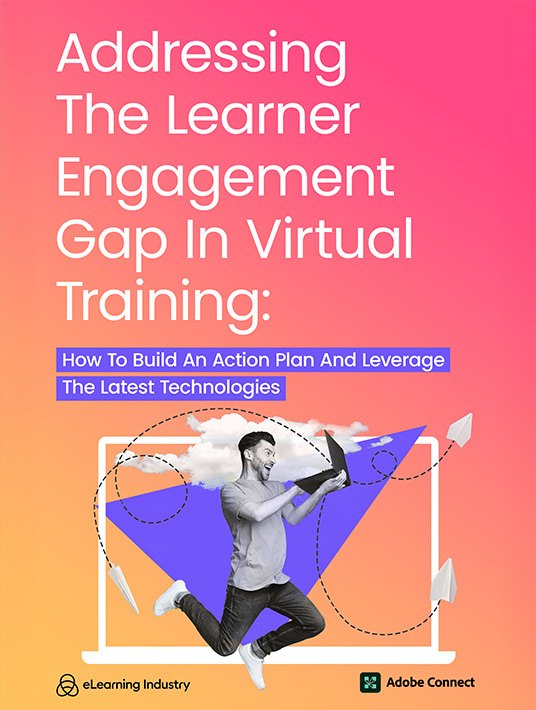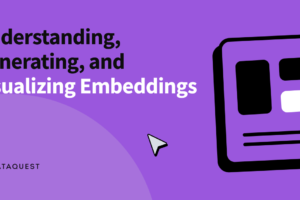
Exploring The Neuroscience Of Learner Engagement
What Does Neuroscience Say About Learner Engagement?
Engagement is primarily a neurological process. It is deeply rooted in the activation of different brain regions that work together to maintain focus, regulate emotions, and form lasting memories. It is also a requirement for successful skill advancement among your workforce. Therefore, if you want to reach high levels of learner engagement in your virtual training and reap the returns, turn to science. What should you consider before designing your next L&D program? From psychological principles to what really motivates your audience and the consequences of increased cognitive load, here’s everything you need to know about the neuroscience of learner engagement.

eBook Release
Addressing The Learner Engagement Gap In Virtual Training
Discover how to shift your strategies and invest in interactive tech solutions that bridge the learner engagement gap.
Under The Lens Of Neuroscience: Psychological Principles Behind Learner Engagement
Emotion
Emotion is central to the learning process. Whether positive or negative, the emotional quality of the learning experience can either boost engagement or diminish it. Positive associations with the learning process will light up the brain’s innate reward system, while negative mental and emotional connections, such as stress, will set off alarms in the brain’s threat circuitry. Addressing potential stressors and ensuring that learners establish positive and constructive connections with the material is instrumental to facilitating engagement and participation in the long run.
Attention
Attention is directly linked to the learner’s emotional state and affects their engagement. When something stands out as new, meaningful, or relevant, it’s far more likely to capture and maintain our focus. Increased attention during training activates neurogenesis, creating and reinforcing neural pathways associated with encountering new stimuli and learning new things. This process strengthens the brain’s memory systems, increasing information consolidation and retrieval, and most importantly, application. Without attention, there can’t be any engagement or positive learning outcomes.
Novelty And Fresh Experiences
Each time we learn something new, the brain rewires itself by forming new neural connections, which enable knowledge acquisition and long-term memory retrieval. This ability is bolstered by the brain’s plasticity and highlights the importance of learning experiences that feel original, fresh, and just the right amount of challenging. Through its malleable design, the brain illustrates that it is built to not only accommodate but also actively seek continuous learning opportunities. Therefore, use your training to provide the brain with what it wants. Encourage learners to explore and experiment; it may be just what they need to boost their engagement.
Relatability
Providing content that learners can relate to strengthens the brain’s mnemonic capabilities without having to resort to rote memorization. When we feel a connection to the subject and are able to understand how it fits into our lives, learning becomes an active, participatory process where we can better retain, consolidate, and reap the benefits of the information acquired. To make your virtual training relatable, show your learners how applicable it is to their situation and how it connects to their experiences, position, and goals. When learners see themselves in the content and understand how they can use it to obtain real-life value, they are much more likely to come back for more.
Social Connection
Social connection makes learning more enticing and effective. According to neuroscience, when we observe our peers perform tasks, mirror neurons are activated, fostering empathy, modeling, and engagement. Moreover, social interaction helps us draw and reinterpret lived experiences and prior knowledge, enabling shared meaning-making, which can prove essential in increasing effort and commitment, creating internal knowledge-sharing networks, and making learning a cornerstone of the organizational culture. These facets make the social aspect of learning invaluable for L&D leaders who want to launch training with great and long-term impact.
Which Factors Influence Motivation In Learners?
Neuroscience considers motivation instrumental for learner engagement and deep, lasting learning. Let’s see the intrinsic and extrinsic factors that drive learners forward.
Intrinsic Motivators
It is said that intrinsic motivation is more sustainable than external rewards because it’s driven by curiosity, autonomy, and a deep desire for betterment. For example, neuroscience suggests that autonomy activates the brain’s reward centers, a vital response for forming long-term habits and ensuring practical and mental effort in the learning process. Similarly, stimulating curiosity entices learners to undertake and repeat desired behaviors, where learning ultimately becomes regular practice. Moreover, intrinsically motivated learners understand how training connects to their personal and professional goals. Therefore, they consider the learning experience more valuable, instead of something abstract or mandatory, which fosters cognitive and emotional investment.
Extrinsic Drivers
While not as durable as intrinsic motivation, external motivators like rewards can really boost learner engagement, according to neuroscience. Let’s take recognition as an example, which is considered a form of extrinsic reward and paramount for advancement during skill acquisition. Recognition activates multiple brain regions and stimulates the release of dopamine, a neurotransmitter that’s associated with pleasure. Because people are generally bound to repeat behaviors that make them feel good, this chemical response will make learners far more likely to invest effort in their training to continue reaping the rewards. Of course, extrinsic drivers must be meaningful and not replace intrinsic motivators; a combination of both elements will form a well-rounded reward system that encourages engagement and cultivates improvement-oriented mindsets.
The Impact Of Cognitive Load On Virtual Learning
Cognitive load refers to the volume of information our brain can process at a given time. Unfortunately, that amount is limited; trying to move past it can lead to burnout and disengagement, which have dire consequences on learning outcomes. Specifically, cognitive load:
- Hinders knowledge retention. Overburdened learners have lower chances of retaining information because increased cognitive load reduces working memory capacity and leads to shallow processing of the material.
- Affects real-world application. Cognitive overload can lead to rote memorization, where learners fail to grasp the nuance needed for active problem solving in real life. It also reduces their chances of applying theory into action.
- Demotivates learners. Learners may feel incompetent when struggling to process excessive or complex information, leading to frustration and withdrawal from the learning process.
- Leads to fatigue and stress. Cognitively dense virtual learning environments may create additional stress for corporate learners. Mental fatigue and burnout can even lead to disengagement, absenteeism, dropouts, and subpar performance in daily tasks.
- Wastes resources and ROI. Time spent on producing learning content that overloads learners is time wasted. Other than cognitively draining your audience, this will ultimately lead to negative ROI, less stakeholder buy-in, and lower participation in future learning initiatives.
Conclusion
Making sure that your training program is engaging for your audience is a big undertaking; even seasoned experts can struggle to figure it out. So, what can you do? Try science. Neuroscientific insights will prove instrumental in understanding how to transform your employees’ learning experience and secure their engagement in the long run.
Download Addressing The Learner Engagement Gap In Virtual Training today to leverage the latest tech, implement tested strategies, and overcome engagement obstacles in your L&D program.
You can also check out Adobe Connect’s webinar “Can You Hear Me?” Isn’t A Learning Strategy to uncover why traditional video tools don’t cut it for training, and what to use instead.
Source link




